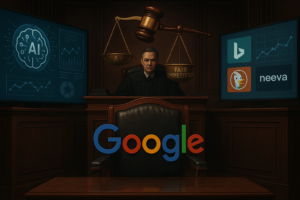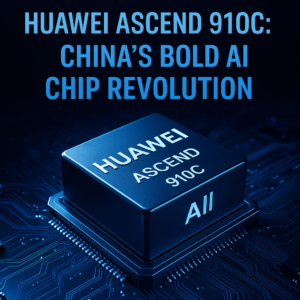The Rise of AI Art: How Ai-Da’s Portrait of Alan Turing Redefines Creativity
In a stunning revelation of the intersection between art and artificial intelligence, Ai-Da, a robot artist, has sold a portrait of Alan Turing for $1.1 million. This groundbreaking event not only showcases the capabilities of AI in creative fields but also highlights Turing’s legacy as the father of computer science.
In a remarkable fusion of technology and creativity, a portrait of Alan Turing, created by the AI artist Ai-Da, has captivated the world and fetched an astounding $1.1 million at auction. This event marks a significant milestone in the recognition of AI as a legitimate creator in the art world, sparking discussions about the evolving nature of creativity and authorship in the age of artificial intelligence.
About Alan Turing
Alan Turing, a British mathematician and logician, is often heralded as the father of computer science and artificial intelligence. His pioneering work during World War II, particularly in breaking the Enigma code, laid the foundation for modern computing. The portrait, which portrays Turing as a god of artificial intelligence, serves as a tribute to his monumental contributions and his vision of machines that could think.
Meet Ai-Da
Ai-Da, the robot responsible for this striking artwork, is no ordinary machine. Equipped with advanced algorithms, computer vision, and a robotic arm, Ai-Da can create art that mirrors human creativity. Resembling a woman with a stylish bob haircut, Ai-Da employs a combination of programming and machine learning techniques to interpret and replicate artistic styles. The robot’s ability to produce unique pieces of art has challenged traditional notions of authorship and creativity, raising questions about the role of AI in artistic expression.
Blurring the Lines of Art
As AI continues to evolve, the lines between human and machine-generated art blur, prompting art critics and enthusiasts alike to reconsider what constitutes “art.” Some of the questions raised include:
- Is it the emotional depth and intention behind a piece?
- Or is the act of creation enough to deem it as art?
The sale of Ai-Da’s portrait has ignited a dialogue about the value of art produced by non-human entities and has positioned AI as a player in the creative landscape.
The Broader Implications of AI in Art
The implications of AI in the art world extend beyond mere aesthetics. The technology behind Ai-Da demonstrates the potential of AI in various creative industries, including:
- Music composition
- Digital design
As AI systems become more sophisticated, there are opportunities for collaboration between human artists and machines, leading to innovative works that push the boundaries of creativity.
Criticism and Support for AI Art
Critics of AI-generated art often express concerns regarding originality and emotional connection. However, proponents argue that AI can serve as a tool for inspiration and enhancement, allowing artists to explore new realms of creativity. The emergence of AI artists like Ai-Da signifies a shift in how we perceive creativity, blurring the lines of what it means to be an artist in a rapidly advancing technological landscape.
Conclusion
Ai-Da’s portrait of Alan Turing is more than just a striking piece of art; it symbolizes the dawn of a new era in creativity fueled by artificial intelligence. As we continue to explore the intersection of technology and art, the future promises to be as intriguing as it is unpredictable.


